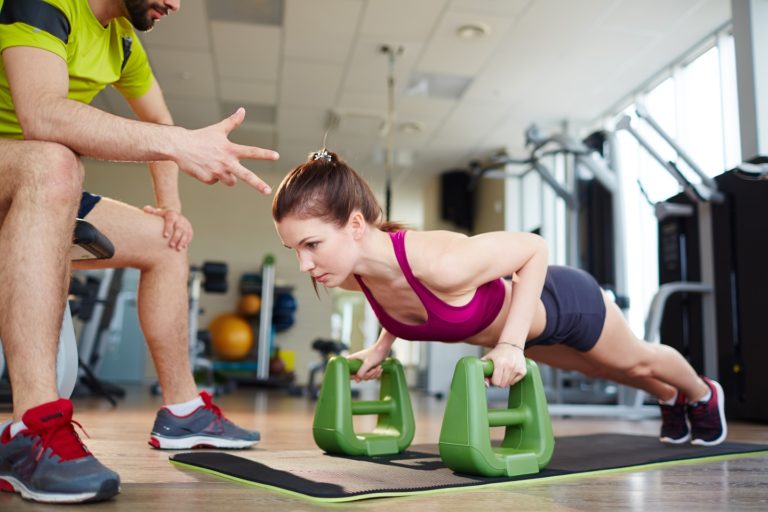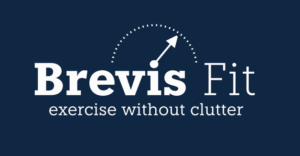Introduction
Proper exercise form is essential for getting the most out of your workout and preventing injury. Either it’s lifting weights, doing yoga, or running on the treadmill. But why does form matter so much? Most importantly, to gain the desired effect from a specific physical activity.
In the context of (correct) Exercise, proper form ensures you engage the correct muscles while avoiding unnecessary strain on the joints and ligaments. With that, you can maximize each exercise’s efficiency and effectiveness. Improper form, then again, can lead to imbalances in load distribution throughout the range of motion and the involved muscles. And those imbalances can increase the risks of injury.
Knowing the correct exercise form boosts your workout efficacy. It will allow you to achieve your fitness goals with less wasted effort and time. In this article, we’ll look at the power of form, how it affects your body, and how to improve your exercise approach. So, grab your workout gear and dive into the science behind proper exercise form.
The importance of biomechanics
Proper Exercise involves understanding each movement’s biomechanics and how it affects your body. Executing an exercise in the correct form allows you to activate targeted muscles. At the same time, it minimizes the stress in the surrounding joints and connective tissues. Therefore, properly understanding biomechanics allows us to perform the exercise correctly and avoid dangerous activities.
Body alignment
One of the fundamental principles of exercise form is maintaining proper alignment. For example, when performing a squat, keep your knees aligned with your toes and your back straight. The equal distribution of loads prevents knee and lower back strain. The essence of correct body alignment is ensuring all the muscles involved are in a position to safely and efficiently help overcome the imposed resistance.
Separate the good from the bad
Each activity has a ratio between the involvement of the target muscles (benefit) and stress and the likelihood of accidents (risk). And understanding biomechanics will enable us to eliminate activities with a lousy ratio in that regard. As a general rule of thumb, the focus should be on reducing the risk side of the equation. For instance, a barbell squat has more risks of overloading the lower back than a hip belt squat. This is due to how the load is provided to the lower back. With the barbell, the upper body must maintain a solid posture to avoid (unwanted) stress on the lower back muscles. This is, however, different with a hip belt squat, where the load is directly placed on top of the hips, and the lower back only counteracts the weight of a torso. In that regard, a hip-belt squat is a better exercise choice than a barbell back squat because it eliminates the chance of placing too much of a load on the lower back’s muscles, which can turn into pain and injuries.

The benefits of using proper exercise form
Using proper exercise form offers many benefits for your body and total fitness. It helps you focus on the right muscles for better engagement and safe and efficient muscular loading. Importantly, these represent the core principles of efficient exercise [1], [2]. This means that proper form is the core element of correct exercise. Without it, Exercise is merely a physical activity [7].
Resolve asymmetries
Correct form exercises improve muscle imbalances, enhancing body symmetry by even proper loading. Here, we are talking about the correct bilateral distribution—for instance, equal distribution on the left or right side of the arms when performing a shoulder press. By exercising in the correct form, we make sure the muscles have an even distribution on each side of the body. It is usually advised to do bilateral exercises for balanced joint activity and even muscle contractions. Sometimes, unilateral movements are necessary, however. Such as rehabbing an injury or exercising only the non-injured side [3].
Side note: Did you know that exercising only on the healthy side is enough to improve the strength of the non-active limb [4]?
Correct muscle activation and strength balance
Another muscular strength gap can come from unequal stress on all the muscles involved in a movement. This is especially noticeable in multi-joint exercises [5]. Performing exercises with proper form ensures even muscle loading. This is assured by performing the movements slow and controlled, without abrupt acceleration, and focusing on muscle fatigue.
In contrast, bad form leads to overusing particular muscles and underusing others. For instance, we can overuse our lower back in a deadlift to expense the glutes and hamstrings. It hinders our progress because the bigger muscles are not getting fatigued enough. It also increases the risk of lower back spasms because it takes up most of the work.
Prevent overloading of deep stabilizer muscles
Finally, another imbalance can be the distribution between superficial and deep stabilizing muscles. Especially in the latter case, wrong muscle loading can cause impingement and spasms. This imbalanced distribution often occurs in multi-joint exercises. It is where specific muscles have a narrow contraction that limits movement range. In such a scenario, the load shifts from the stronger superficial muscles to the deep stabilizers. This can lead to compression and muscle cramps. This frequently happens when performing complex movements for the lower body, such as the deadlift [6].
Improved exercise efficiency
Furthermore, using proper Exercise form improves your total workout efficiency. Using the correct form can fatigue our muscles with lower resistance. This creates less stress on the joints. This is crucial in strength training, where muscle overload with minimal joint strain is vital.

Common mistakes in exercise form
Mastering proper exercise form is crucial for maximizing gains and preventing injuries during workouts. Despite its significance, various common mistakes persist among fitness enthusiasts that can compromise effectiveness and safety. From lifting weights too quickly to improper breathing techniques and incorrect body posture, these errors can hinder progress and lead to unnecessary strain on the body. Understanding and rectifying these pitfalls is essential for achieving optimal results while minimizing the risk of injury.
Lifting fast and losing control of the movement
One common mistake is using momentum instead of muscle control. This often occurs with exercises like bicep curls or bench presses. Trainees often swing or jerk weights, neglecting their muscles. This lets us lift heavier weights but stresses joints and reduces muscle tension as muscles don’t raise the load [1], [7]. Remember, the goal is to fatigue muscles, not to hoist the heaviest weight.
Retaining breath
Another common mistake is improper breathing techniques. Breathing during exercise is often overlooked. Did you know that it’s crucial for core stability and proper form? Incorrect breathing can raise blood pressure and disrupt body stability. Especially important is to not follow a specific breathing pattern, such as exhaling on the way up, and inhaling on the way down. Especially with correct Exercise, repetitions can last between 5 – 10 second in each direction and many times, we do not even lift, but just hold the weight. For that reason, aligning the breathing with our lifting is erroneous. It is better to follow a natural breathing pattern, as you do when you are running. The more muscle tension and tightness you feel, the more complex the exercise becomes and the faster you breathe. Prevent constraining your breath. Breath with an open mouth and allow for the constant oxygen supply, reduce the tension in your face, and prevent increases in blood pressure or even fainting.
Improper body posture
Finally, poor posture is prevalent, especially during exercises targeting the upper body. Hunched posture may cause imbalances, weak muscle activation, and a higher risk of injury. Most importantly, it’s crucial to avoid exaggerated curves in the spine and neck, as well as a slouched forward posture in the upper back. To maintain proper posture, keep your abdominal muscles tight and contracted to ensure your lower back remains straight. Push your shoulders down to prevent shoulder dislocation and retract your shoulder blades to open up your chest, allowing your torso muscles to engage efficiently. Adhering to these three rules can benefit any exercise movement.

How improper exercise technique can lead to injuries
Exercising in incorrect form adds unnecessary strain to your body. It can also raise the risk of acute or chronic injuries. For example, squatting with inward-knocking knees can stress knee ligaments. This action may cause pain or tears. In parallel, rounding your back during deadlifts can result in herniated discs or back strains.
Improper techniques can also worsen existing muscle imbalances and postural problems. Weak glutes and improper squat technique can strain knees and lower back, worsening imbalances and discomfort.
Injuries from poor exercise techniques hinder progress and have lasting effects. Prioritizing proper form is vital for safe, effective, and sustainable workouts.

The importance of working with a qualified fitness professional
Learning proper exercise techniques from educational resources is valuable. So does working with a qualified fitness professional. They can provide personalized guidance and ensure your form is correct. A certified personal trainer or fitness instructor can assess you. They can take note of your current abilities and address imbalances or limitations. They will also design a workout plan that suits your needs and goals.
A fitness professional also provides real-time feedback. They correct any form deviations and prevent potential injuries. They can offer modifications or progressions based on your fitness level. Furthermore, they ensure you continue to challenge yourself without compromising your safety.
A fitness professional can also help you set realistic goals and track your progress. They can also provide the motivation and accountability needed to stay on track. From beginner to trained athlete, a pro trainer boosts your exercise and prolongs results [8], [9].

Conclusions
Form matters when it comes to your physical activity. In Exercise, as we define it, form is vital to the whole protocol. Proper exercise form is crucial for maximizing the effectiveness of your workouts. It prevents injuries and helps you achieve deep muscular fatigue faster. Grasping the science behind exercise forms allows you to decide which exercises to select and how to perform them. This drastically improves the productivity and safety of your workout program.
By prioritizing proper exercise techniques, you engage the correct muscles. You lessen joint stress and improve general workout efficiency. Remember to educate yourself. Start with light weights, and listen to your body. Record yourself, and consider working with a qualified fitness professional.
Investing time and effort into mastering proper exercise forms is for your long-term health and fitness. So, pay attention to your form next time you hit the gym. And reap the benefits of an innovative, safe, and effective workout. Your body will thank you.
Literature
[1] S. Knez, “Exercise form – Guide for Safety and Efficiency,” BrevisFit, May 07, 2022. https://brevis-fit.com/exercise-form-guide-for-safety-and-efficiency/ (accessed May 09, 2022).
[2] S. Knez, “The Purpose Of Exercise,” BrevisFit, Dec. 12, 2020. https://brevis-fit.com/the-purpose-of-exercise/ (accessed Apr. 24, 2021).
[3] K. Mullican and R. Nijem, “Are Unilateral Exercises More Effective Than Bilateral Exercises?,” Strength Cond. J., vol. 38, no. 1, p. 68, Feb. 2016, doi: 10.1519/SSC.0000000000000181.
[4] R. Cirer-Sastre, J. V. Beltrán-Garrido, and F. Corbi, “Contralateral Effects After Unilateral Strength Training: A Meta-Analysis Comparing Training Loads,” J. Sports Sci. Med., vol. 16, no. 2, pp. 180–186, Jun. 2017.
[5] S. Knez, “Single-joint versus multi-joint exercise – The big difference,” BrevisFit, Mar. 31, 2022. https://brevis-fit.com/single-versus-multi-joint-exercise/ (accessed Apr. 01, 2022).
[6] S. Knez, “Lower Back Health – How To Keep Your Lower Back Healthy,” 2023. https://brevis-fit.com/lower-back-health-how-to-keep-your-lower-back-healthy/ (accessed Sep. 13, 2023).
[7] S. Knez, “Weight lifting or Exercise. Which do you do? – BrevisFit,” 2022. https://brevis-fit.com/weight-lifting-or-exercise-which-do-you-do/ (accessed Jan. 17, 2022).
[8] S. Knez, “Five Key Qualities of a Good Personal Fitness Trainer,” BrevisFit, Sep. 10, 2023. https://brevis-fit.com/five-key-qualities-of-a-good-personal-fitness-trainer/ (accessed Sep. 13, 2023).
[9] S. Knez, “5 Reasons Online Personal Training saves you time and money,” BrevisFit, Sep. 03, 2022. https://brevis-fit.com/5-reasons-online-personal-training-saves-you-time-and-money/ (accessed Sep. 11, 2022).

